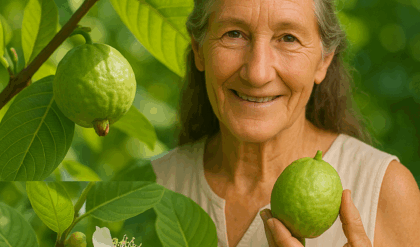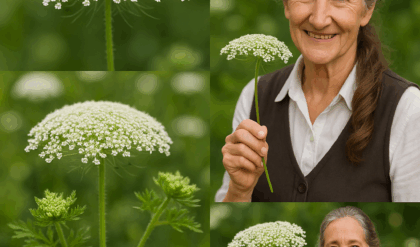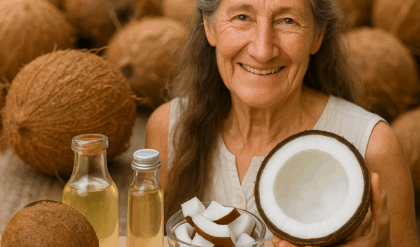In the heart of wetlands and beside still waters grows a plant you’ve probably seen a thousand times—and likely never imagined eating. But Cattails (Typha species) are far more than simple swamp plants. They are a nutritional powerhouse, a survival food staple, and a symbol of natural sustainability.
Used for centuries by indigenous communities for food, medicine, and crafting, cattails are one of the most versatile and accessible wild plants in the world. With nearly every part of the plant being edible or useful, cattails stand as one of nature’s most underappreciated gifts.

🍠 Rhizomes: The Underground Power Source
The rhizome—the thick, root-like stem running horizontally beneath the water—is the most important and nutrient-dense part of the cattail.
Nutritional Profile:
- High in complex carbohydrates
- Rich in dietary fiber
- Contains potassium and magnesium
- Provides sustained energy for long-term endurance
How to Use Rhizomes:
- Boil or roast for a starchy, energy-rich meal
- Dry and grind into flour for use in breads or soups
- Chew raw in survival scenarios to extract natural starch
Whether you’re cooking in your kitchen or relying on the wild, cattail rhizomes provide the kind of slow-burning fuel that keeps you going longer, making them ideal for survivalists, backpackers, and foragers alike.
🥬 Shoots and Stalks: The “Cattail Heart”
In spring, the young shoots—often called cattail hearts—emerge as tender, cucumber-like vegetables.
Health Benefits:
- Low in calories
- Contains vitamin C (immunity) and vitamin A (eye health)
- Naturally hydrating
How to Use:
- Eat raw in salads for a refreshing crunch
- Sauté or steam like asparagus
- Chop into stir-fries or soups
Their delicate taste and juicy texture make cattail shoots a delicious addition to modern dishes, especially for those who enjoy fresh, foraged greens.
🌽 Flower Spikes: Nature’s Wild Corn Substitute
In early summer, the green flower spikes can be harvested and eaten much like corn on the cob.
Benefits:
- Rich in dietary fiber
- Contains small amounts of protein and micronutrients
How to Use:
- Boil the immature green flower spike
- Serve with butter, herbs, or spices
This is one of the most satisfying and unique parts of the plant—ideal for adventurous cooks looking to try something new.
💛 Pollen: The Protein-Rich Wild Flour
When cattails bloom, they release bright yellow pollen—an incredible food source.
Health Benefits:
- High in plant-based protein
- Packed with antioxidants
- Naturally gluten-free
How to Use:
- Mix with wheat or oat flour for baking
- Stir into pancakes, muffins, or bread dough
- Add to smoothies or soups for a nutrient boost
Cattail pollen is an ideal supplement for those on vegan or vegetarian diets and an easy way to sneak extra nutrients into meals.
🍃 Leaves and Stems: Natural Food Wraps and More
While not directly consumed for nutrients, cattail leaves serve many practical uses in the kitchen and beyond.
Uses:
- Use like banana or corn husks to steam or grill food
- Wrap rice, fish, or meats for natural flavor infusion
- Dry and weave into eco-friendly baskets or mats
These biodegradable, non-toxic leaves are a forager’s version of parchment paper—and make for beautifully rustic food presentation.
🧭 Why Cattails Are a Survivalist’s Dream
✅ Year-Round Availability – Rhizomes and roots can be harvested in any season
✅ High Calorie Yield – A reliable source of complex carbs in food-scarce conditions
✅ Multi-Part Utility – Food, firestarter, bedding, insulation, rope, and even wound dressing
✅ Low Footprint – Cattails regenerate quickly, making them sustainable to harvest when done responsibly
In any long-term survival or off-grid scenario, few wild plants offer the same level of caloric return, medicinal use, and material value.
♻️ More Than Food: The Eco-Friendly Power of Cattails
Cattails aren’t just good for your body—they’re good for the planet.
- Natural water filters – They absorb heavy metals and pollutants in wetland restoration
- Carbon sinks – Fast-growing and dense, cattails help trap CO₂
- Renewable resource – They thrive in the wild without human cultivation
Integrating cattails into sustainable food systems could offer an alternative to resource-intensive crops and help reconnect communities with local ecosystems.

⚠️ Harvesting Tips for Safety and Sustainability
Before harvesting:
- ✔️ Choose clean wetlands – Avoid areas near industrial runoff or roadsides
- ✔️ Harvest responsibly – Take only what you need and leave enough to regrow
- ✔️ Clean thoroughly – Wash away dirt and debris before consumption
- ✔️ Verify the species – Cattails are easy to identify, but always double-check to avoid lookalikes like iris, which is toxic
And as always, consult a local foraging guide or expert to ensure safe and responsible harvesting.
🌱 Final Thoughts: A Forgotten Superfood in Plain Sight
Cattails are a living reminder that nature provides—quietly, abundantly, and sustainably. Packed with calories, vitamins, minerals, and fiber, they are one of the few wild plants that can feed, fuel, and even clothe you in a pinch.
Whether you’re experimenting in the kitchen, learning to forage, or preparing for off-grid survival, cattails are more than a curiosity—they’re a complete plant-based resource waiting to be rediscovered.
So next time you walk by a marsh, look again. Your next meal—or emergency ration—might just be swaying in the breeze.





